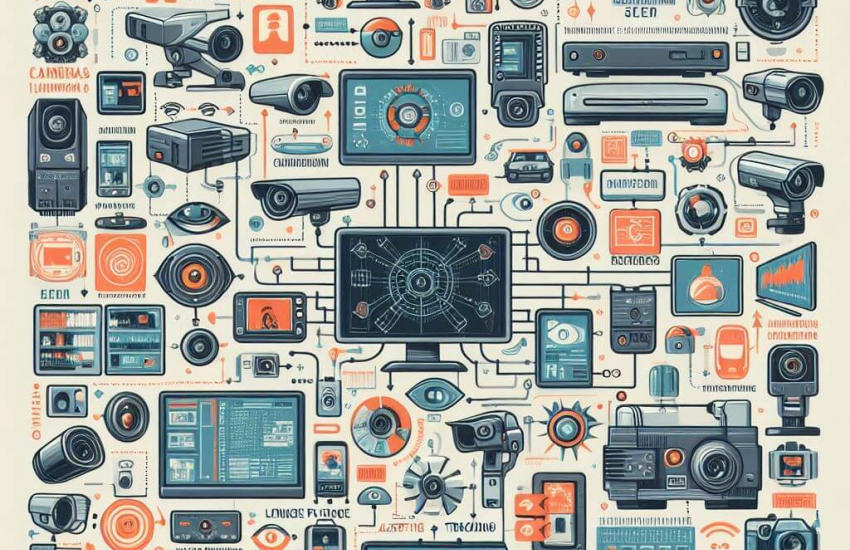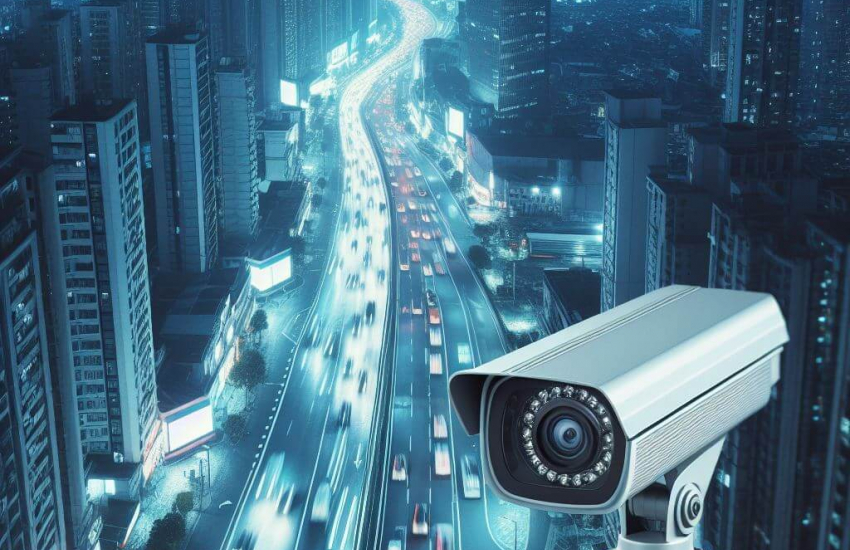Technical Terms in Video Surveillance Explained
When getting into a community or learning about any new product, it is best to research all its different terminology. The same is true for surveillance cameras. When you are buying surveillance equipment in the market or online, you will come across many terms that many may find confusing.
Knowing these terms and acronyms will allow smooth communication without any confusion. You also won’t have to go back and forth to search for the meaning of every term. They will also help you explain what you are looking for in your surveillance planning to the providers or vendors.
This article covers a glossary of key terms related to video surveillance for your convenience.
Decoding Technical Terminology

Below, you can find a list of terms, acronyms, and phrases commonly used in the video surveillance community and market. Let’s check them out-
- Analog Camera: Analog cameras only utilize coaxial cables, unlike modern ones that use ethernet cables. Their equipment and installation are also different, requiring analog video processing devices. Meanwhile, modern cameras use cloud servers, PoE switches, etc.
- Analog Signal: Analog signals go through electrical mediums and transfer the footage from one device to another. The signals come in different wavelengths, from high to low. You can use an encoder to convert signals from analog to digital. Many modern surveillance devices do not work with analog signals.
- Analytics: Video analytics is a modern feature in surveillance cameras that detects unusual events occurring within the perimeter of its view. It recognizes spatial and material changes that are out of the ordinary. Examples of this are suspicious activities, the appearance of hazards, and the breaking of traffic rules getting picked up by cameras.
- CCTV: Closed-circuit Television or CCTV has all its circuits closed while connected. It is so because the circuits aren’t meant to broadcast any footage on the television but only show it on someone’s monitor. CCTV cameras are backdated now. However, the British still call all security cameras CCTV cameras.
- Digital Signal: Similar to analog signals, digital signals also transfer data via electric signals. However, the signal is different. While analog signals are sine waves, digital signals are 0s and 1s, enabling them to transfer and communicate with a computer.
- DVR: DVR or Digital Video Recorder works as a video processor, encoder, and storage. They can convert analog video footage into digital by processing it. Afterwards, they can keep the files stored for future usage.
- Encoder: An encoder is a device that converts analog signals to digital signals. It can get its signal from an analog computer and transmit its digital signal to a DVR, NVR, or server.
- IP: You may have heard of IP addresses before. IP or Internet Protocol is the means of communication and connection between computers worldwide. A device with an IP address can utilize it to connect and communicate with another over a network connection.
- IP Camera: IP cameras transmit video signals over IP signals in an NVR system. They also use the same signal to receive control signals from the management. Because of the way they work, they allow remote access to video footage and come with many advanced features.
- NVR: Also known as Network Video Recorder, they also process and encode video data transferred from the security cameras. Unlike DVR, you can stream the video directly using the recorder, allowing for remote access, storage, and management.
- RAID: RAID, or Redundant Array of Independent Drives, is a series of hard drives that holds the data inside a DVR or NVR setup. These drives are totally similar to each other, and even the data inside them will also be duplicated. It is a security measure in case one of the drives gets lost or damaged; the rest can still keep the data intact.
- Switch: In a digital surveillance system, many security cameras will be plugged into one switch. It eliminates the need for multiple coaxial cables as the switch connects all the cameras with a single ethernet cable. The cable then connects the system to a server, computer, or NVR.
- VMS: VMS or video management systems utilize several different surveillance means, such as security cameras, sensors, perimeter intrusion detection systems, alarms, access control systems, etc., in order to allow the user to monitor any premises. It enables higher security. However, VMS also includes other equipment for management, such as on-site or cloud servers or encoders.
Understanding Video Surveillance Technologies
A classic video surveillance system consists of the following components:
Cameras
Cameras are imaging devices that capture footage of an area and transfer it to the switch or DVR. It can be either an analog camera or an IP camera. Depending on its features, it may come in various shapes and sizes.
Recording Device
A recording device takes the camera’s data and processes it to make it ready for viewing or storage. Some systems may skip this part and directly stream the video data to the cloud or computer. There are currently two types of recording devices: the DVR and the NVR.
Display Monitors
Display monitors are the output devices that display the footage captured by the cameras. Anyone in front of the monitor can view everything happening in a premise through it. Some with picture-in-picture features enable multiple displays on one monitor. It helps keep track of footage from multiple cameras. Not all monitors support high-resolution or good-quality video.
Networking Equipment
Networking equipment consists of components that allow the recording device or switch to connect to the network or each other. Ethernet cables are the standard way to do it now. But one can also connect all devices to the same Wi-Fi signal or cellular network in order to access the cloud.
Software
Software in a surveillance system is installed in the recorders to process and store the data. Cameras with analytics have software that allows them to analyze video footage in real-time in order to detect any unusual occurrence.
The Significance of Tech Terminology in Communication

As someone planning to invest in technology to help your business, property, or house have better security and management, it is mandatory to know about the relevant terminology. Knowing the precise terms can help in multiple ways in your strategy, such as-
- If you know the correct terms, you can use them when purchasing equipment for the system. Otherwise, both you and the vendor will have a tough time figuring out exactly what you are aiming for.
- Struggling with the terminology can give any vendor the idea that you are unfamiliar with surveillance tech. So, some of them can try to give you poor-quality equipment at a high cost or expensive ones but not the ones you need. It also enables them to take advantage of the situation in many other ways.
- Knowing the correct terms will let you explain the situation precisely to the technician when there is any malfunction in the surveillance system. So it can quicken the troubleshooting and ensure the security is back online in no time.
- Tech terminology also makes the conversion shorter and more precise. If you mention something about the recorder, it may raise questions about what kind of recorder you are talking about. But saying NVR will give them the right idea from the get-go.
FAQs
What Is Video Surveillance for Physical Security?
Physical security means any security measures against unwanted or unauthorized facility access. It also means security against harm or damage to people and objects. Video surveillance is one such physical security measure. It utilizes cameras and monitors with many features to surveil a premise.
How Artificial Intelligence Is Used in Video Surveillance?
Artificial intelligence in video surveillance is known as video analytics. It is software that can analyze a video upon receiving it and signal the authorities if anything seems out of the ordinary. For example, it can detect when someone seems to be breaking into a property or a vehicle is not abiding by traffic rules.
Can DVR Software Improve Security and Video Surveillance Systems?
While digital video recorder (DVR) software is somewhat outdated nowadays, it doesn’t change the fact that they are one of the best means of security and surveillance. DVR encodes, processes, and stores the data. So, it may not be possible to remotely access it without the right equipment. However, the authorities can access and use the files from on-site storage.
Conclusion
Like any other tech corner, surveillance systems also include so many terminologies. Anyone new to this sector may find it overwhelming. However, familiarizing yourself with the terms and acronyms is a proper start.
Once you know the terms, communicating with technicians, vendors, VSaaS providers, security guards, and others in the community will be smooth and comprehensible to you.


